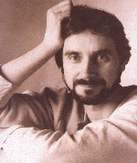Mmmm... I see much more links about contemporary dance in this thread!

Speaking of contemporary dance, anyone knows anything about DV8 company?
It's the first time I hear about them, but I´m looking forward to getting the film you're planning to rip, hehe.

Regarding Paul Taylor's works, I haven't been able to get Dancemarker yet (no full sources). Anyway I want to do my bit posting a new link I've found. I haven't seen it yet and don´t know anything about the quality, but after reading the following review I'm sure it's worth downloading!

 Paul Taylor - Wrecker's Ball - B@Ll%E2%82%ACT - Modern Dance - Ballet.avi
Paul Taylor - Wrecker's Ball - B@Ll%E2%82%ACT - Modern Dance - Ballet.avi 
GREAT PERFORMANCES
The Wrecker's Ball: Three Dances by Paul Taylor
Produced by Judy Kinberg; directed by Matthew Diamond; choreography by Paul Taylor; set by Santo Loquasto; lighting by Alan Adelman; edited by Girish Bhargava; Mitch Owgang, line producer; Emily Cohen, associate producer; Judi Elterman, associate director. For Great Performances: Glenn DuBose, managing director; Jac Venza, executive producer. Great Performances is presented by six public television stations: WNET/New York; KERA/Dallas-Fort Worth; KQED/San Francisco; MPT/Maryland; SCETV/Columbia, S.C., and WTTW/Chicago.
For one thing, three separate dances by the choreographer Paul Taylor have been incorporated into a remarkably seamless whole that captures aspects of American history with a pop-culture buoyancy that manages to be surprisingly chilling. For another, Mr. Taylor, whose uneasy relationship with television has been stroked soothingly for years by Jac Venza, executive producer of ''Great Performances,'' has worked closely with the producer, Judy Kinberg, and the director, Matthew Diamond, to devise an on-screen look and style that are fluid and powerful.
Add invaluable contributions by three masters of their trades: Santo Loquasto's sets, Alan Adelman's lighting and Girish Bhargava's editing, and you have what is definitely a television event.
Taped at a Catholic girls school in lower Manhattan, ''The Wrecker's Ball'' takes place in an old theater called Danceland that is about to be demolished. A homeless man stands outside listening to a tinny portable radio and the songs of the Andrews Sisters. The man is played by Mr. Taylor, and appropriately enough, he provides the cue to enter the theater and return to the 1940's as his dancers prepare to whirl into his ''Company B.''
The music, beginning with ''Bei Mir Bist Du Schon,'' is captivating, but the background images speak hauntingly of soldiers going off to war, perhaps never to return. It is the perfect Taylor blend of celebrating life and recognizing death. The balance in this case is breathtaking.
And the company is superb: Francie Huber and Hernando Cortez bouncing around the floor to ''The Pennsylvania Polka'' (''Everybody has a mania to do the polka from Pennsylvania''); Patrick Corbin surrounded by adoring women in ''Oh, Johnny, Oh!''; dashing solos by Andrew Asnes with ''Tico, Tico'' and Thomas Patrick with ''Boogie-Woogie Bugle Boy''; Mary Cochran tantalizing the males in ''Rum and Coca-Cola''; Kristi Egtvedt swaying to the romantic ''I Can Dream Can't I?'', and Rachel Berman Benz and David Grenke in the bittersweet duet to ''There Will Never Be Another You.''
The sadness lurking on the fringes of ''Company B'' stems not just from the reality of World War II but also the recognition that a special era in American life, one of innocence and boundless optimism, has passed. The next dance, ''Funny Papers,'' moves to the 1950's and dares, with Danceland now a movie house, to be gloriously silly with novelty ditties like ''Alley Oop!,'' ''Yellow Polka Dot Bikini'' and ''I'm Popeye the Sailor Man.'' The 1950's were, despite nostalgic politicians, almost perversely mindless.
The final dance, ''A Field of Grass,'' moves to the 1960's with songs sung by Harry Nilsson. It is the period of smoking joints and drifting into supposed nirvana while incense burns in front of mandalas. Mr. Taylor is uncharacteristically glum in this piece. The drug culture is seen as something profoundly sad as reality begins to seep into damaged lives reduced to involuntary spasms and flailing about in the rain. It's a short (shortened for television) but powerful work, ending with the plaintive wish: ''If I could only have a friend.''
In the end, a wrecker's ball is seen smashing into the Danceland theater. Mr. Taylor may be saying that the obliteration of the past is deserved, or merely that it's time to move on. Whatever. His choreography is eloquent.










